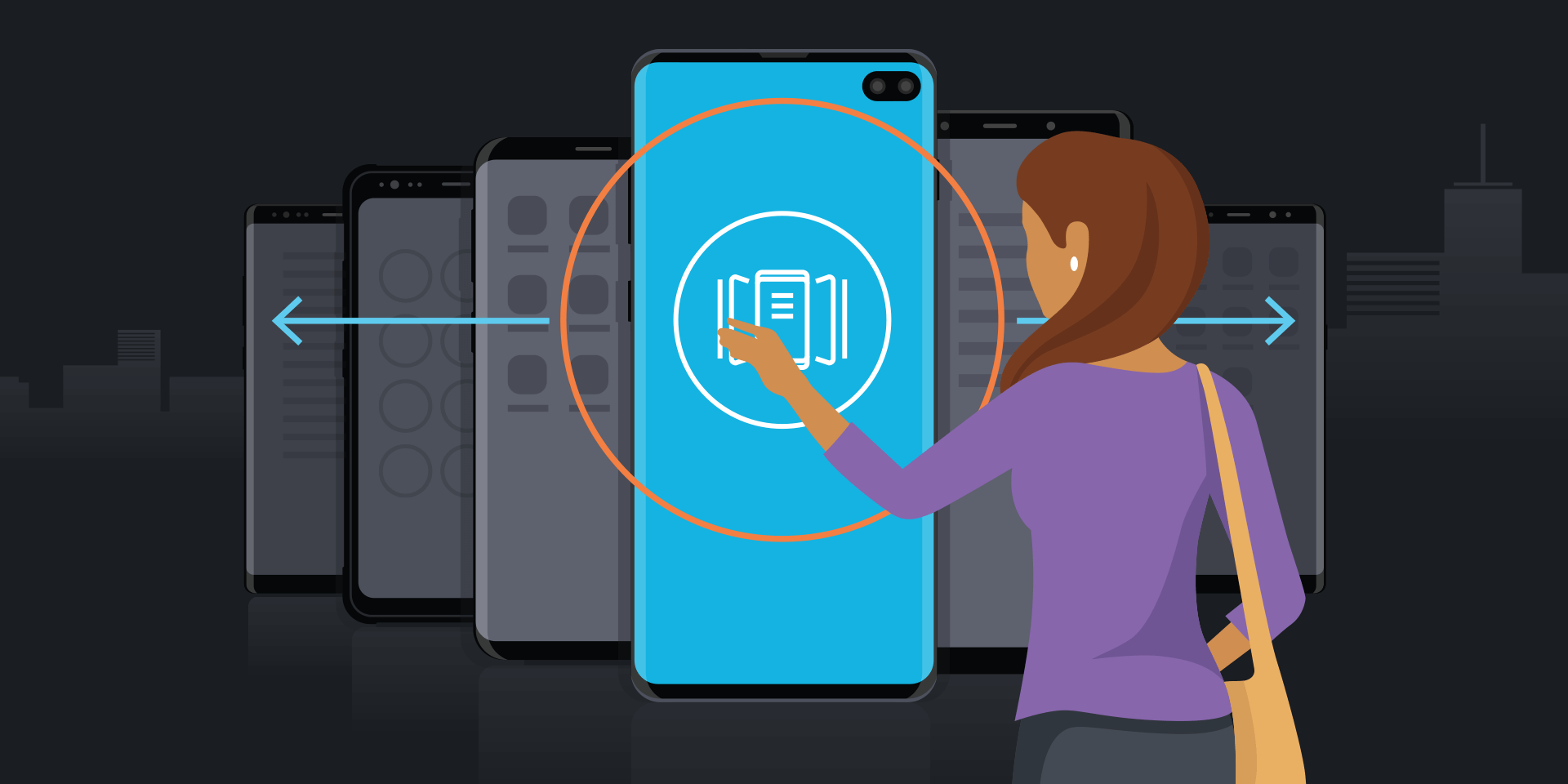For a small business owner, challenges are unavoidable — and lack of capital is one of the most common. Cash flow is the driving force behind your company’s ability to pay its bills, and it’s very different from profits. If your business doesn’t have the necessary cash flow to pay suppliers or other liabilities, you could be driven to shut down in a matter of weeks.
Cash flow planning can be complex, but it doesn’t have to be. The key is to understand and practice good cash flow management from the very beginning of starting a new business. Here’s a breakdown of the specific components of cash flow, how to calculate where you’re at, how to forecast where you’re headed, how to set up your operations to support weekly positive cash flow and what options you have when your cash runs low.
This article explains the essentials of cash flow management in a small business.
What is cash flow?
Cash flow statements
Estimate your cash needs
EBITDA: A cash flow measure
Accrual vs. cash accounting
Revenue, operating income and cash flow
Forecasting cash flow
Policies that support smart cash management
Options for when cash is tight

What is cash flow?
Cash flow is the amount of cash and cash equivalents both entering and leaving your company in a given time period. In other words, cash flow is the movement — into and out of your business month-to-month — of the actual cash you have on hand, the cash that’s actually available to pay your bills, make investments and meet payroll. This includes cash in the bank, as well as in investments, money market accounts, short-term certificates of deposit and treasury bills.
The key is to understand and practice good cash flow management from the very beginning of starting a new business.
In a consumer-focused business such as a retail store (online or offline), you use cash to purchase inventory, pay employees, pay other vendors and cover overhead. Typically, customers pay by one of these methods:
- Credit card
- Digital cash app
- Cash
In a business-to-business (B2B) environment such as a distribution business, company cash is used similarly. However, customers typically pay on terms (due on receipt, 10 days, 30 days, etc.), which creates an account receivable. They then remit payment by one of these payment methods:
- Check
- Automated Clearing House (ACH)
- Credit card
As a result, it typically takes longer for B2B companies to convert short-term assets (such as inventory and accounts receivable) into cash.
Cash flow statements
Many business owners don’t examine their cash flow statement closely enough. This document records the company’s cash inflow and outflow during a specific time frame. This statement includes the three sources of cash flow and each of their uses:
- Operations: Money your business makes and spends running your regular day-to-day processes
- Financing: Money your business obtains from or pays to loans or investments (from owners or investors, as well as bank loans and lines of credit)
- Investing: Money you’ve spent to acquire equipment, real estate and other assets, or assets sold to generate cash
Estimate your cash needs
If your business has a years-long track record of operations, you likely know your cash needs for a typical month or quarter. But for a new business with little operating history, the best way to estimate your cash needs is to consider all the expenses of starting the company and running your basic operations. Operating expenses fall into two categories:
- Cost of goods sold (COGS) or cost of services sold:
- Personnel costs for those creating the good or delivering the service (base pay, bonuses, health insurance, workers’ compensation)
- Inventory
- Shipping and transportation
- Fuel
- Commissions
- Selling, general and administrative (SG&A), aka overhead:
- Business insurance
- Business license
- Legal fees
- Rent, utilities, supplies
- Marketing
- IT support
If you’re a brand-new business owner, do your own research and seek outside guidance to estimate these costs as accurately as possible. If you’ve been in business for a year already, you can use your existing cash flow history as a guide, as well as quotes you’ve received, and increase the estimated costs in areas where you need to see growth.
To estimate your cash flow … take your current assets and subtract your current liabilities and you get your working capital.
If your business growth rate is relatively stable, you can use your cash flow statement to estimate your cash needs. Most smaller businesses, however, rely on their income statement and balance sheet. The balance sheet shows you your company’s assets, liabilities and net worth at any given point in time, and connects your income statement to your cash flow statement. To estimate your cash flow, focus on your company’s short-term (“current”) assets and liabilities, including the current portion of long-term loans. Take your current assets and subtract your current liabilities and you get your working capital — which includes cash, accounts receivable, accounts payable, inventory and prepaids.

EBITDA: A cash flow measure
Any accounting software program can automatically generate a cash flow statement for a desired period (typically a month, quarter or year). But aside from this statement, you can also measure your cash flow by calculating your earnings before interest, taxes, depreciation and amortization (EBITDA). Many bankers and investors use EBITDA because it focuses on core operations and strips out the impact of financing and investment decisions, instead highlighting your operational performance. Unlike your cash flow statement, EBITDA is not one of the generally accepted accounting principles (GAAP) recognized by the Securities and Exchange Commission (SEC).
EBITDA provides a big-picture view, so it’s an excellent tool for forecasting your business performance over the next three to five years — which is particularly valuable insight for prospective investors or lenders. However, EBITDA is not a sufficient cash management tool on its own, because it doesn’t provide enough detail to effectively manage cash on a weekly basis.

Accrual vs. cash accounting
In cash accounting, you document your revenues and expenses only when cash (in any form) changes hands, so your cash flow calculations are straightforward. What you see on your income statement as profit equals your actual cash. Many small businesses start with cash accounting because it’s simpler and is easy to track in Excel or in online accounting platforms.
In accrual accounting, revenues are recognized when earned and expenses are recognized when incurred.
Accrual accounting, however, provides a much more accurate picture of your finances over a particular time period. In accrual accounting, revenues are recognized when earned and expenses are recognized when incurred. This method adheres to the revenue recognition principle of business accounting, which advises businesses to record revenues when they’re earned rather than waiting until the cash is received. So, unlike cash accounting, accrual accounting is GAAP-compliant.
Revenue, operating income and cash flow
Revenue is another name for the money generated by sales. For example, your firm may receive an average of $100,000 per month in sales for its products or services, which equates to $1.2 million for the year. Operating income is your revenue less all your costs of goods or services sold and your overhead expenses. Under accrual accounting, you may book a sale of $15,000 in April, but if you give your customer 30-day payment terms you likely will not receive payment until May. Meanwhile, you still have to pay salaries, rent and other COGS and overhead expenses. So you would have negative cash flow from that sale in April — but your cash would catch up and go positive in May. This is why forecasting cash flow is so important.
Forecasting cash flow
To ensure you have sufficient funding to cover gaps in cash flow, you need to accurately forecast your cash flow needs on a weekly basis for 12 weeks, which allows enough time to make any necessary moves. For simplicity, here’s an eight-week example of why forecasting is so critical:
The service firm in this example has an operating profit of 20 percent. On April 1, it sells a $60,000 service over a two-month period, providing a monthly revenue of $30,000, expenses of $24,000 and an operating profit of $6,000 for April and for May. The customer has 30 days to pay after billing. It takes one week for the accounting team to process the sale and send out the bill, thus converting the order into an account receivable. So, for the first month, the service firm will wait 37 days to receive payment.
What's the best phone for your business?
Take this quick assessment to discover the smartphone most tailored to your business needs. Download Now
Now, assume the COGS and overhead are paid out in equal parts on the 15th and 30th of every month. In this case, the service firm has to cover all its cash expenses before it receives any cash from the customer. Therefore, it has a cash flow of −$12,000 on April 15 and −$24,000 on April 30. The accounting team bills for May on May 1 and later receives payment of $30,000 for April on May 7, bringing cash flow positive to $6,000.
To ensure you have sufficient funding to cover gaps in cash flow, you need to accurately forecast your cash flow needs on a weekly basis for 12 weeks.
By May 15, however, the company has spent another $12,000, so it now has −$6,000 in negative cash flow again (−$12,000 in new expenses plus the $6,000 left over from April’s payment). The company expends another $12,000 by May 31 but also receives the $30,000 payment for May by May 31, so cash flow is once again positive at $12,000.
Policies that support smart cash management
As a savvy business owner, you want to ensure you never overdraw from your business bank accounts. In any given week, you always want to have more cash coming in than going out, i.e., consistently positive cash flow. In addition to forecasting this cash flow, smart cash management also requires implementing policies that reduce your cash risks and help correlate inflow with outflow, as well as obtaining financing.
Policy
- Create and enforce a credit policy. Require prepayment or a significant deposit for all new customers or those with inadequate credit history. If a customer repeatedly pays late, notify them of their recategorization as a credit risk.
- Create a customer service-centric collection policy, and use it diligently.
- Request 30-day terms (or longer) from your suppliers.
- Obtain full or partial deposits (or prepayment) from customers where possible.
- Obtain financing using the matching principle: short-term financing for short-term obligations, and long-term financing for long-term obligations.
Financing
- Term loan: Used to buy equipment or build a new location so you can retain the cash you need to pay your bills; acquired from equipment lenders like manufacturers, distributors or equipment financing firms, as well as peer-to-peer lenders, financial technology companies or banks
- Business line of credit: Used to fund your working capital (short-term assets minus short-term liabilities) and meet payroll on time. If you miss payroll, the IRS or your state’s department of taxation may pursue you for unpaid payroll taxes. This line of credit can be obtained from accounts receivable financing firms, inventory finance providers, financial technology firms or banks.
- Grants: Small business, economic development or research grants, such as through the Small Business Innovation Research (SBIR) program
- Alternative financing: Crowdfunding, hard money lending, bridge financing (for specific projects) or factoring loans
Options for when cash is tight
At some point, almost inevitably, your cash will be tight. Fortunately, if you’re diligent about forecasting out your weekly cash flow 12 weeks out, you can anticipate these bottlenecks. Here are some options you have to bridge the gap:
- Offer discounts to customers who pay in advance of their contract’s terms.
- Accept credit cards (if you don’t already), but include a convenience fee for this privilege, unless it’s an immediate payment.
- Take longer to pay your accounts payable.
Accurately estimating your cash needs and lining up strategic financial resources will make it much easier for your business to meet payroll and pay the bills on time. If you happen to have an accounting or finance background, you can do this planning yourself. Otherwise, seek guidance from an expert such as a professional accountant or financial advisor who is well versed in cash flow and business financing.
Accurately estimating your cash needs and lining up strategic financial resources will make it much easier for your business to meet payroll and pay the bills on time.
Whether you’re a seasoned entrepreneur or launching a brand-new business, it’s easy to burn cash quickly — even in a matter of weeks or months. When you understand what impacts your cash flow and why, you can follow the steps in this guide to manage your cash effectively, which is critical to the success of your growing business. Unless you have an open money spigot nearby, your cash management capabilites may determine whether your business survives, dies or thrives.
Samsung is dedicated to creating small business solutions that help your business grow and move forward strategically — every step of the way. You can also take advantage of exclusive business pricing through Samsung Business Direct, for discounts and financing options on everything from smartphones and tablets to desktop monitors and memory.








